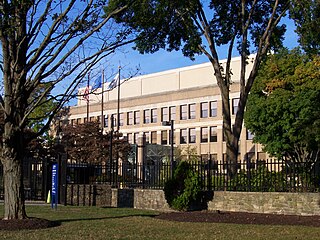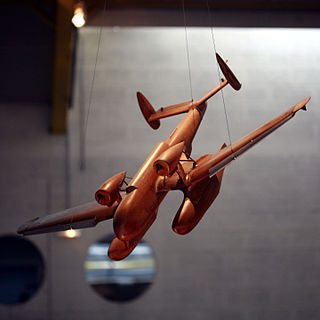Design
The AV.28 was conceived as a two-seat, off-center cockpit fighter design powered by two Gnome-Rhône 14M Mars engines. Armament consisted of two 20 mm (0.787 in) cannon and three 7.5 mm (0.295 in) Darne machine guns. Fauvel presented the AV.28 to the French Air Ministry in 1938, but the design was rejected. In April 1940, Fauvel proposed another off-center cockpit design, the three-seat AV.30, to be powered by Pratt & Whitney engines, featuring a centrally controlled hydraulic turret, but France's defeat in 1940 prevented it from being realized. [1]

The Darne machine gun is a machine gun of French origin.

Pratt & Whitney is an American aerospace manufacturer with global service operations. It is a subsidiary of United Technologies (UTC). Pratt & Whitney's aircraft engines are widely used in both civil aviation and military aviation. Its headquarters are in East Hartford, Connecticut. As one of the "big three" aero-engine manufacturers, it competes with General Electric and Rolls-Royce, although it has also formed joint ventures with both of these companies. In addition to aircraft engines, Pratt & Whitney manufactures gas turbines for industrial and power generation, and marine turbines. As of 2014, the company reported having 31,500 employees supporting more than 11,000 customers in 180 countries around the world. In 2013, Pratt & Whitney's revenue totaled $14.5 billion.

France, officially the French Republic, is a country whose territory consists of metropolitan France in Western Europe and several overseas regions and territories. The metropolitan area of France extends from the Mediterranean Sea to the English Channel and the North Sea, and from the Rhine to the Atlantic Ocean. It is bordered by Belgium, Luxembourg and Germany to the northeast, Switzerland and Italy to the east, and Andorra and Spain to the south. The overseas territories include French Guiana in South America and several islands in the Atlantic, Pacific and Indian oceans. The country's 18 integral regions span a combined area of 643,801 square kilometres (248,573 sq mi) and a total population of 67.3 million. France, a sovereign state, is a unitary semi-presidential republic with its capital in Paris, the country's largest city and main cultural and commercial centre. Other major urban areas include Lyon, Marseille, Toulouse, Bordeaux, Lille and Nice.










